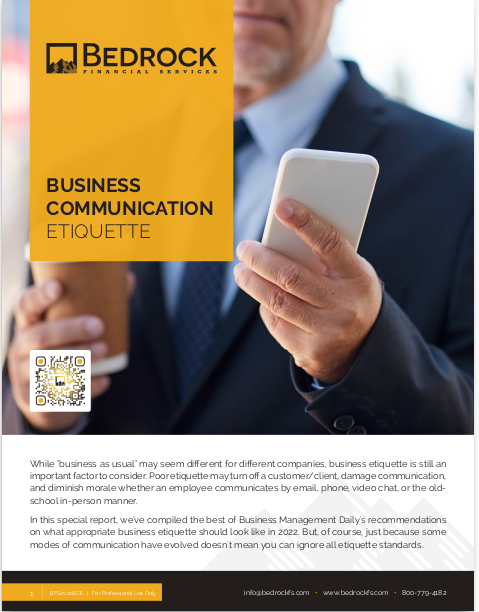Key Takeaways
-
Trust is created not through a single interaction but through a series of consistent, thoughtful actions that reinforce your credibility over time.
-
Small, intentional communication practices—before, during, and after the sales process—help shape how clients perceive your reliability, empathy, and professionalism.
First Impressions Only Start the Trust Process
When a prospective client visits your website, sees your logo, or hears your elevator pitch, you begin building familiarity—not trust. Familiarity is the opening handshake. It creates recognition, not confidence. The real trust-building begins the moment they respond to your outreach, ask a question, or attend a meeting. From that point on, every micro-interaction becomes part of a broader story about whether you’re someone they want to keep working with.
Trust Is Cumulative, Not Instantaneous
In the financial world, especially when insurance and retirement planning are involved, trust is an earned currency. Clients are making high-stakes decisions, often with significant long-term consequences. They don’t just want competence—they want to know that your competence is consistent.
Here’s what this means in practice:
-
One impressive webinar does not compensate for a cold, automated email the next week.
-
A detailed proposal loses its value if the client has to follow up three times to get a copy.
-
A polished social media post doesn’t replace the need for a personal check-in six months into the policy.
You build trust in layers, not leaps.
How Small Interactions Create Lasting Trust
Your Responses Speak Louder Than Your Sales Pitch
How you respond to everyday client questions can matter more than the most powerful marketing message. For example:
-
Do you answer client emails within 24 hours, even if it’s just to say you’re looking into it?
-
Do you listen fully before offering advice, or do you jump into solutions?
-
Do you follow up after a policy is issued to confirm everything is clear?
Every time you show up predictably, you reinforce dependability. And dependability is at the core of trust.
Clear, Honest Communication Lowers Anxiety
Many financial topics are naturally stressful. When clients don’t understand something, their minds often fill the gaps with worst-case assumptions. You can reduce this emotional load by committing to clarity:
-
Avoid industry jargon, or explain it right away.
-
Lay out timelines so they know what to expect.
-
Share next steps before they need to ask.
-
Be transparent when something isn’t ideal, and offer a plan to address it.
This proactive communication builds not only confidence in your expertise but also comfort in your relationship.
Building Trust Before the Sale
Trust doesn’t start when someone becomes a client. It starts the moment someone enters your ecosystem—even before they speak with you directly. Here’s how to build trust early:
1. Set Tone with Your Website and Emails
Your website is often the first impression, but your follow-up emails make or break the relationship. Use these tips:
-
Make your online presence client-focused, not advisor-focused. Speak to their challenges.
-
Avoid stock phrases. Instead of “custom solutions,” try “We design plans that fit your goals and income.”
-
Ensure automated email sequences are human-sounding and valuable.
2. Use Education as a Trust Vehicle
Offering education in a clear and digestible way builds credibility fast. Consider:
-
Hosting short educational videos on topics like retirement income or Medicare timelines.
-
Sharing a monthly Q&A newsletter that answers real questions you’ve received.
-
Providing plain-language resources on what happens after they sign up.
When prospects see that you prioritize their understanding over your sales, you become a trusted source—not a pushy seller.
Maintaining Trust After the Sale
Once a client signs on, the trust-building doesn’t stop. In fact, it becomes more important. Your retention, referrals, and reputation all depend on what you do after the paperwork is signed.
1. Send Meaningful Follow-Ups
Not all follow-ups are created equal. Generic check-ins don’t build connection—but specific, helpful follow-ups do:
-
“I wanted to make sure your first premium was processed correctly.”
-
“Let me know if you received your ID cards in the mail.”
-
“I noticed you haven’t logged into your account yet. Want me to walk you through it?”
Showing attention to detail shows you care beyond the sale.
2. Schedule Regular Policy Reviews
Many professionals only reach out when there’s something new to sell. That erodes trust. Instead, make it standard to do yearly or semi-annual check-ins.
-
Review life changes and how they may affect coverage or planning.
-
Help clients understand if new rules, like the 2025 Medicare Part D cap, may benefit them.
-
Offer a cost-comparison if their needs have changed.
Consistency makes you part of their financial rhythm, not just a name on paper.
3. Remember Key Dates and Personal Info
People notice when you remember what matters to them. Use a CRM or notes system to track:
-
Birthdays and anniversaries
-
Policy renewal dates
-
Family milestones they’ve mentioned
A quick note or message on these occasions shows your care is human, not transactional.
Rebuilding Trust When It Slips
Even the most diligent professionals can miss a step. A late response, a miscommunication, a billing error—it happens. What matters is how you handle it.
Own the Mistake Immediately
Don’t wait. Acknowledge the issue directly, without excuses:
-
“I missed your message, and that’s on me.”
-
“We didn’t explain this clearly, and I want to fix that.”
Taking responsibility reestablishes credibility.
Provide a Clear Fix and a Follow-Up
Clients don’t expect perfection. They expect transparency and solutions.
-
Tell them exactly what you’re doing to resolve the issue.
-
Set a clear timeline for the fix.
-
Follow up to confirm it’s resolved—even if they don’t reach out first.
This shows professionalism and reassures clients that they’re still in good hands.
The Role of Consistency in Trust Maintenance
Trust is fragile. Even small lapses in professionalism or engagement can cause doubt. But you can protect against this by systematizing your trust-building practices.
Build Trust Systems, Not Just Intentions
Good intentions don’t scale. Systems do. Here are a few ways to make trust part of your operations:
-
Use automated reminders to follow up 30, 90, and 180 days post-sale.
-
Create templates for explaining complex topics in plain English.
-
Train your staff to use the same tone, values, and clarity in their communication.
When your entire client experience runs on a standard of helpfulness and clarity, trust becomes embedded in your business.
Trust as a Long-Term Asset
In 2025, competition is high and client attention is short. But trust remains a competitive advantage that no tool or technology can replace.
A client may shop around for lower rates or newer tools. But they stay loyal when they feel seen, heard, and respected by a consistent human being.
Every interaction—no matter how small—is an opportunity to make that loyalty stronger.
Let Every Interaction Reflect Who You Are
You don’t need the loudest voice in the room to earn trust. You need the clearest, most consistent presence.
Every time you:
-
Return a call when you say you will
-
Explain something simply without being asked
-
Reach out when there’s nothing to sell
You’re reinforcing a professional reputation that compounds over time. That’s how trust is built. That’s how trust stays.
If you’re looking to turn more of these daily habits into a scalable system that supports your growth, we can help. At Bedrock Financial Services, we equip financial professionals with the marketing tools, communication frameworks, and client engagement strategies to build lasting trust at every stage. Sign up today and let us help you elevate the way you connect with your clients—one reliable interaction at a time.







